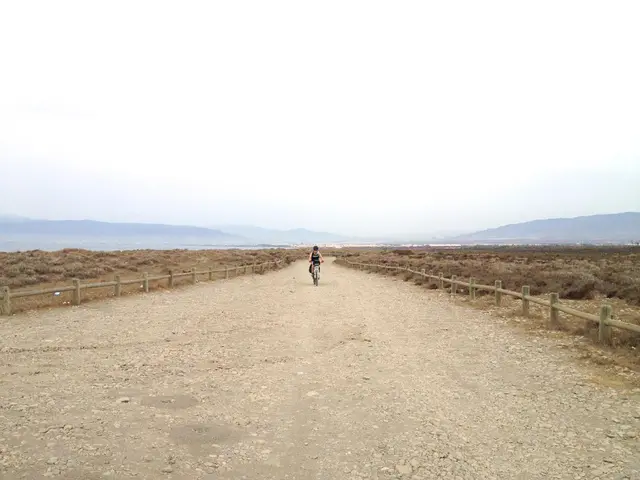Enhancing Birdwatching as a Pivotal Eco-Tourism Attraction in Andaman and Nicobar Islands
The Andaman and Nicobar Islands, a tropical archipelago in the Bay of Bengal, are home to a rich avifauna, boasting over 300 bird species. Among these, several are endemic, including the Narcondam Hornbill, Andaman Shama, Nicobar Pigeon, Andaman Green Pigeon, Andaman Wood Pigeon, Andaman Crake, Nicobar Megapode, and the Nicobar Imperial Pigeon.
However, these endemic bird species face various threats, with their conservation status ranging from vulnerable to near threatened. Notable endemics, such as the Andaman Wood Pigeon, Andaman Serpent Eagle, Nicobar Pigeon, and Nicobar Parakeet, are under pressure due to habitat loss and degradation, illegal hunting, invasive species, limited conservation infrastructure, and threats to indigenous communities.
One of the main challenges is habitat loss and degradation, caused by wetland reclamation, land conversion, and large infrastructure projects like the proposed transshipment port at Great Nicobar. This leads to deforestation and ecosystem disruption, putting pressure on bird populations. Invasive species also pose a significant threat, altering habitats and competing for resources.
Illegal hunting using airguns is another direct threat to bird survival, while limited access and infrastructure for conservation and eco-tourism, including poorly developed trails, few trained guides, and a lack of comprehensive scientific data, hinder conservation efforts. Threats to indigenous communities, whose lives are intertwined with the ecosystems, can result in socio-ecological conflicts due to development projects.
In response, the Andaman administration is promoting eco-tourism, particularly birdwatching, as a sustainable development strategy. This approach aims to protect the islands' rich avifauna, support local economies, and encourage responsible tourism practices.
On July 27, a special public lecture titled "Birdwatching in the Andaman and Nicobar Islands" was hosted by the Department of Tourism in collaboration with the Avians Club Andaman and Nicobar Islands. Arun Singh, President of the Avians Club, led the lecture.
The upcoming development project on Great Nicobar Island poses significant risks to the region's birdlife due to habitat loss and fragmentation, leading to population declines, reduced breeding success, and even local extinctions. Increased human activity and noise pollution associated with the project can further disrupt bird behavior and foraging patterns.
To mitigate these ongoing threats, it is crucial to balance infrastructural development with ecological preservation and strengthen scientific research and local engagement. This will help ensure the survival of these unique and fascinating bird species for future generations to enjoy.
- To protect the rich avifauna of the Andaman and Nicobar Islands, eco-tourism, particularly birdwatching, is being promoted as a sustainable development strategy by the Andaman administration.
- Illegal hunting using airguns is a direct threat to the survival of several endemic bird species, putting them under pressure due to habitat loss and degradation, invasive species, limited conservation infrastructure, and threats to indigenous communities.
- In response to threats to bird species on the Andaman and Nicobar Islands, the Department of Tourism collaborated with the Avians Club Andaman and Nicobar Islands to host a special public lecture titled "Birdwatching in the Andaman and Nicobar Islands."
- Balancing infrastructural development with ecological preservation and strengthening scientific research and local engagement is crucial to mitigate ongoing threats to the unique and fascinating bird species on the Andaman and Nicobar Islands.




